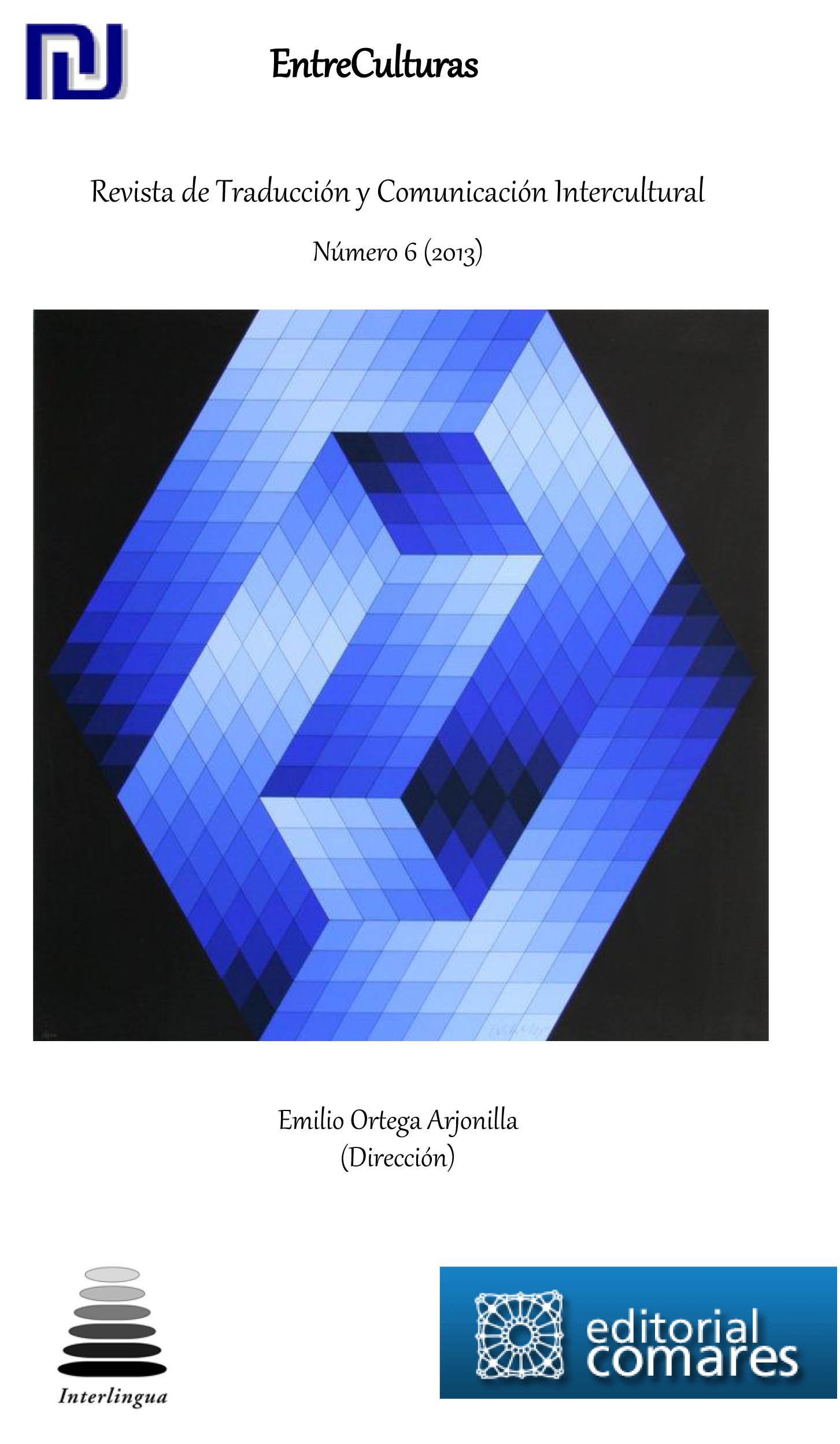EL ROL DESEMPEÑADO POR EL INTÉRPRETE JUDICIAL ORGANIZACIÓN DEL DIÁLOGO ENTRE LAS PARTES EN PROCEDIMIENTOS JUDICIALES PENALES
DOI:
https://doi.org/10.24310/Entreculturasertci.vi6.11526Keywords:
Public Service Interpreting, Court Interpreting, Criminal ProceduresAbstract
This article deals with the practice of Court Interpreting in criminal procedures. In this article I try to study the rule adopted by the interpreter organizing the dialogue between the different parts represented in the Court room. Logically, the rule of the interpreter cannot replace the judge (Court authority) but it is useful to organize the times and facilitate the fluidity of communication in the Court context.
Downloads
Metrics
References
ABRIL, M. I. (2006): La interpretación en los servicios públicos: Caracterización como género, contextualización y modelos de formación. Hacia unas bases para el diseño curricular. Tesis doctoral. Universidad de Granada.
ABRIL, M. I. (2006): La interpretación en los servicios públicos: Caracterización como género, contextualización y modelos de formación. Hacia unas bases para el diseño curricular. Granada: Editorial Universidad de Granada.
BENNET W. LANCE (1981). Reconstructing reality in the Courtroom. Rutgers University Press (The State University of New Jersey).
BERK-SELIGSON, S. (1990). The Bilingual Courtroom: Interpreter in the Judicial Process. The University of Chicago Press.
CORSELLIS, ANN (2010). Traducción e Interpretación en los servicios públicos. Primeros pasos. Granada: Editorial Comares, colección interlingua nº 89 (1ª ed.)
EDWARDS,A. B. (1995). The Practice of Court Interpreting. Benjamins Traslation Library,John Benjamins, Ámsterdam
GIAMBRUNO, C. (1997). Language Mediation in the Judicial System: The Role of the Court Interpreter. Tesis doctoral. Universidad de Alicante.
HALE, S. B. (2004). The Discourse of Court Interpreting: Discourse practices of the law, the witness and the interpreter. Benjamins Traslation Library, John Benjamins, Ámsterdam
HALE, S. B. (2010). La interpretación comunitaria. La interpretación en los sectores jurídico, sanitario y social. Traducción: Rosa Cobas Álvarez y Carmen Valero Garcés. Coordinación: Carmen Valero Garcés-Grupo FITISPos. Granada: Editorial Comares, colección interlingua nº 85.
HANDI, E. (2003). La traducción e interpretación en las entidades públicas: oficina de asilo y refugio (OAR). Madrid
MASON, I. (2001). Triadic Exchanges: Studies in Dialogue Interpreting. Manchester: St. Jerome Publishing.
ORTEGA ARJONILLA, EMILIO (dir.) (2008). La traducción e interpretación jurídicas en la Unión Europea. Retos para la Europa de los ciudadanos. Granada: Editorial Comares, colección Interlingua nº 75.
ORTEGA HERRÁEZ, J. M. (2006). Análisis de la práctica de la interpretación judicial en España: el intérprete frente a su papel profesional. Tesis doctoral. Universidad de Granada.
ORTEGA HERRÁEZ, J. M. (2006). Análisis de la práctica de la interpretación judicial en España: el intérprete frente a su papel profesional. Granada: Editorial Universidad de Granada.
ORTEGA HERRÁEZ, J. M. (2010). Interpretar para la justicia. Granada:Granada: Editorial Comares, colección interlingua nº 91.
VALERO GARCÉS, CARMEN (ed.) (2003). Traducción e interpretación en los servicios públicos. Contextualización, actualidad y futuro. Granada: Editorial Comares, colección interlingua nº 39.
VALERO GARCÉS, CARMEN (2006). Formas de mediación intercultural. Traducción e Interpretación en los servicios públicos. Granada: Editorial Comares, colección interlingua nº 55.
Downloads
Published
How to Cite
Issue
Section
License
All contents published in Entre culturas. Revista de traducción y comunicación intercultural are protected under the Creative Commons Attribution-NonCommercial-ShareAlike 4.0 International (CC BY-NC-SA 4.0) license. All about this license is available in the following link: <http://creativecommons.org/licenses/by-nc-sa/4.0>
Users can copy, use, redistribute, share and exhibit publicly as long as:
- The original source and authorship of the material are cited (Journal, Publisher and URL of the work).
- It is not used for comercial purposes.
- The existence of the license and its especifications are mentioned.
There are two sets of authors’ rights: moral and property rights. Moral rights are perpetual prerogatives, unrenounceable, not-transferable, unalienable, imprescriptible and inembargable. According to authors’ rights legislation, Entreculturas. Revista de traducción y comunicación intercultural recognizes and respects authors moral rights, as well as the ownership of property rights, which will be transferred to University of Malaga in open access. The property rights are referred to the benefits that are gained by the use or the dissemination of works. Entreculturas. Revista de traducción y comunicación intercultural is published in an open access form and it is exclusively licenced by any means for doing or authorising distribution, dissemination, reproduction, , adaptation, translation or arrangement of works.
Authors are responsable for obtaining the necessary permission to use copyrighted images.





7.png)
